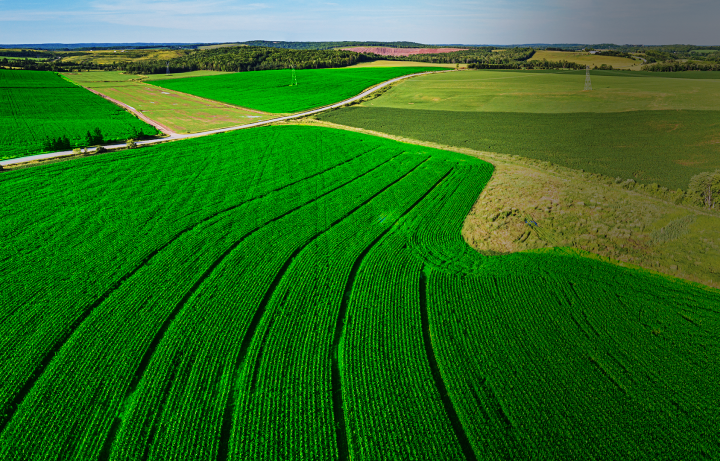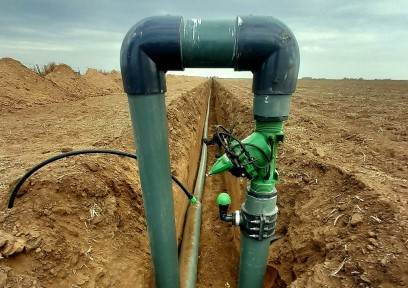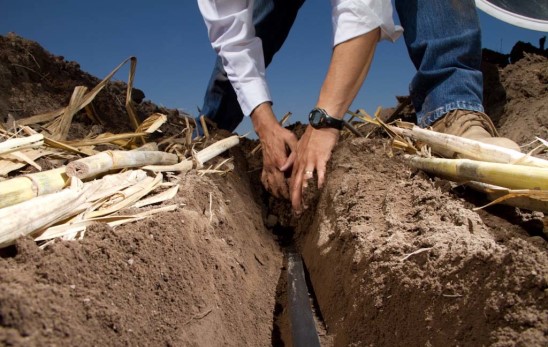Discover when Surface and Sub Surface Drip Irrigation can outperform traditional pivot systems in unique circumstances for row-crop farms.
Explore the benefits of more precise, efficient irrigation and see if it’s the right fit for your farm’s needs.
Comparing Drip & Pivot: Smarter Irrigation Solutions for Your Farm
Maximize land and profits

Depending on your farm’s unique needs and challenges, choosing the right irrigation method is crucial for maximizing crop yields and optimizing resource use.
We looked at different types of irrigation and their benefits; surface and sub-surface (SDI) drip irrigation stands out, and we’ll explore why!
Rivulis provides you with the insights needed to make informed decisions that align with your agricultural goals. Investing in the right irrigation system can lead to significant long-term savings and enhanced sustainability in your agricultural practices.


Getting Started

Setting up a drip irrigation system requires careful, thoughtful planning and meticulous execution. In many regions, Rivulis engineers handle the process of designing and providing a system plan that meets the specific needs of your farm.
Each farm is unique, with varying water sources, crop types, and soil conditions, all of which need to be considered. A well-designed system tailored to your specific environment will help ensure the most efficient and successful irrigation system, but it requires an understanding of your farm’s infrastructure and long-term crop rotations.
Follow these steps to equip yourself with the knowledge needed to make informed decisions, avoid common pitfalls, and implement a system that will meet your irrigation needs, enhance crop yields, save water, and optimize resource use.
Frequently Asked Questions
What is the irrigation field coverage?
Drip irrigation systems provide 100% coverage regardless of field shape and terrain, allowing for effective watering in various conditions. In contrast, pivot irrigation systems typically achieve about 80% coverage of square-shaped areas due to limitations imposed by the circular pattern of water application (unless a corner pivot sprinkler is used). While pivots can efficiently irrigate large, uniform fields, they often struggle in irregularly shaped areas, leading to underutilized land potential. Overall, drip irrigation offers more consistent and complete coverage, making it a more versatile choice for diverse agricultural landscapes.
How efficient are water savings with Surface or Sub-surface Drip Irrigation?
Drip and Subsurface Drip Irrigation (SDI) systems are generally more efficient in water savings compared to pivot systems. Drip and SDI can achieve over 90% uniformity in water application due to significantly reduced evaporation and runoff. In contrast, pivot irrigation often has lower efficiency rates and is impacted by factors such as wind drift.
Surface drip and SDI systems deliver water directly to the root zone, minimizing waste and ensuring that plants receive the precise amount of moisture they need. This targeted approach leads to better water conservation overall, making drip and SDI more effective options for water savings compared to pivot irrigation.
What are the cost implications?
The cost implications of drip irrigation compared to pivot irrigation systems can vary significantly. Sub-surface drip irrigation generally involves a higher initial investment due to the cost of the system and installation. This system is designed for long-term use, which can justify the upfront costs over time through benefits like reduced water usage and increased crop yields and quality. Surface drip irrigation systems cost less to install than SDI systems, with options of annual laterals and retrieval, and this cost should be considered in the long-term analysis. Although pivot irrigation systems are more expensive than Surface to set-up, they usually have a lower initial setup cost than SDI, making them more accessible for some conditions and farmers. However, their efficiency and overhead method of watering can lead to water waste and increased plant disease risk due to wet foliage potentially increasing operational expenses over time. Ultimately, while Surface and sub-surface drip irrigation has a higher upfront cost, it can lead to significant long-term savings through improved efficiency, lower water usage, and higher yields. In some applications, especially on leased land and for allowing different rotation crops, a surface drip system is more suited. In contrast, pivot systems may appear less expensive initially but can be more costly in the long run due to potentially lower crop yields and input inefficiency.




